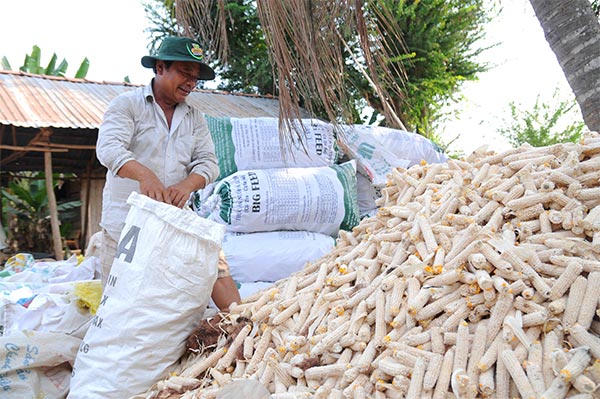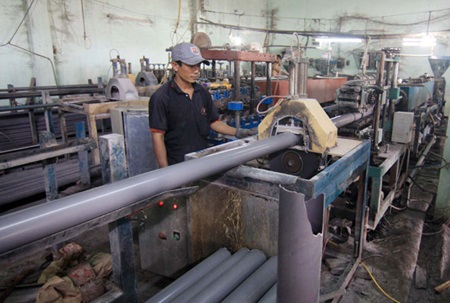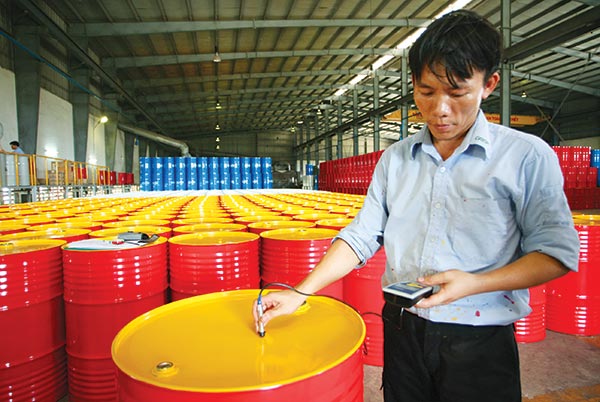Genetically modified corn seeds introduced to Vietnamese farmers
Genetically modified corn seeds introduced to Vietnamese farmers
Dekalb Vietnam, a subsidiary of the US’ Monsanto Company, yesterday launched the first integrated knowledge transfer field in the southern province of Dong Nai to introduce genetically modified (GM) corn seeds to farmers.

The project is aimed to give hundreds of Vietnamese farmers the chance to grow corn seeds with weed management and insect protection traits for the first time in their lives, and transfer the knowledge to thousands of farmers to better capture yield potential and make farming operations more stable, successful and profitable.
Nguyen Hong Lam, a lifetime corn-growing farmer, also one of the first growing GM corn in his own field in Vietnam shared: “From my own experience, the productivity of conventional corn seeds and GM corn are equal in volume, but the quality of the latter is better and the flavour is more delicious.”
“Above all, by growing the new GM corn seeds with built-in pest and weed protection traits, I can cut costs on pesticides, herbicides and labour drastically, around VND3 million (almost $150) per hectare,” he noted.
Based on this first model, Dekalb Vietnam plans to replicate the initiative nationwide until August, expectably creating hundreds of integrated knowledge transfer fields to help train farmers.
“When the GM corn seeds bring benefits to the farmer by optimising inputs, maximising potential yield and income, the application and widespread distribution of these seeds will be quick. Within three years, I expect the transition from the traditional seeds to new ones might be successful,” Nguyen Hong Chinh, director of External Relations at Dekalb Vietnam told VIR when asked about the GM corn seed potential.
According to Chinh, the company still looks for new investment opportunities like opening a plant or research centre, but now its main focus is on the journey with farmers via providing assistance in creating more knowledge transfer fields, investing in technological solutions and optimising field management capability.
Chinh added that, “GM technology is one of the solutions for the Vietnamese agriculture to reach the target of producing 1.5 million tonnes of corn seeds within three years.”
To illustrate his belief, he said that in the course of 10 years, by switching to GM corn seeds, the Philippines has increased its productivity from 2.5 tonnes to 5.8 tonnes per hectare. This helps the country meet the rising feed demands and becoming an exporter.
During his visits to the GM cornfields in Dong Nai, deputy director of the Ministry of Agriculture and Rural Development’s Crop Production Department Pham Dong Quang said, “We can expect that this technology, when applied in actual crop production in Vietnam, will not only benefit the local farmers but also contribute to improve productivity and the quality of domestic corns, ease the pressure from growing corn imports, and better protect the environment and human health by reducing pesticide usage.”
Vietnamese corn imports have soared to meet the growing feed demand. In 2014, Vietnam imported 4.79 million tonnes of corn worth $ 1.22 million, amounting to a sharp rise by 119.05 per cent in volume over 2013, according to statistical figures.
To address this challenge, the Vietnamese government has made two important decisions with the issuance of the Master Agriculture Restructuring Plan along with the supporting policies to diversify production by converting from rice to alternative crops, like corn, in the Mekong Delta region and the approval of corn seeds with weed management and insect protection traits after a decade of shaping the regulatory framework.




















